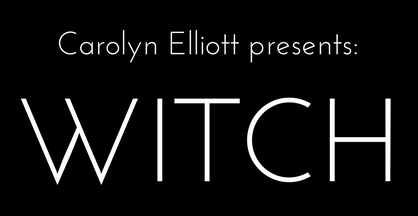by Bettie Noire
It hits you suddenly and without warning.
Floating around in dreamland, the blissful scene is interrupted by a feeling of dread. You start to panic and don’t know why. Something’s coming. Something…dark.
The landscape shifts, and you’re awake and safe in your bedroom. Phew. Every detail of this space is exactly the same as it always was, except… what’s that static noise?
What’s that shadow in the corner? It’s coming closer! It’s hovering over you!
Your first instinct is to run but find you can’t move a muscle. You’re frozen in place. You try to scream but no sound escapes your lips. The shadow is dragging you off the bed.
This is how I die, you think. It’s taking me to hell…
The weight is unbearable. You hear your name ringing in your ear, clear as a bell. Your heart nearly pounds out of your chest.
Then, just like that, it’s over.
You’re awake, you’re safe, you’re scared out of your mind.

Does this sound familiar?
You’re not alone. As many as 50% of all people have experienced episodes like this at some point in their lives, and depictions can be found in art and literature dating back hundreds of years.
Many cultures around the world have created their own delicious myths surrounding this terrifying phenomenon.
Today, we call it sleep paralysis.
My own experiences with “the Night Hag” began way before I formed permanent memories. I know this because I can recall a childhood episode very vividly, and remember thinking “ugh, this again.”
Back then, it was simply a bodily sensation… the fear and hallucinations didn’t come until I grew older.
For years I suffered in silence because no one seemed to have any clue about what I was talking about, and I didn’t have a term to google back then.
I actually had to try searching every keyword I could think of before the words “sleep” and “paralysis” came together.
How did you learn about it?
After a lifetime of battling this demon and experiencing every flavor of it—from alien abduction to underworld kidnapping—I’ve developed my own methods of keeping the Pandafeche at bay.
I’m happy to report that I haven’t seen the little bugger in quite some time.
Bon voyage, creepy shadow presence! I hope there are lots of cookies wherever you are!
Even though it hasn’t yet been fully explained by science, there are some great theories about why this happens to us, which we can explore later on.
Tonight, I’ll share with you a few of the most popular tips for avoiding sleep paralysis, and one of my own.

A few things first:
Consider seeing a specialist. Yes, I have to say it. If you’re experiencing sleep paralysis often, there could be an underlying disorder such as narcolepsy (the most common association) or even certain mental illness. Let’s rule that out.
The most widely-accepted theory for why sleep paralysis happens is this: A natural part of falling asleep is “atonia.” This is when your brain relaxes your muscles so you don’t act out your dreams. Otherwise, you’d have a lot to explain in the morning! Sleep paralysis is likely the result of atonia happening while you’re awake. Add your body’s fight-or-flight juice, and you have some vivid hallucinations to complete your cocktail.
You won’t die. Sleep paralysis, although soul-shakingly terrifying, is not physically dangerous nor poses a serious medical risk. I know you’ll be certain you’re definitely dying in the moment, but it’s nice to know right now while you’re awake and reasonable… that you won’t.
And now, some things to try.
1. Go the f*ck to sleep
(Ok, I just got this book as a baby shower gift, and I had to sneak it in there! Did you know Samuel L Jackson narrates it? I digress…)
But seriously, if you can help it, go to bed at a decent hour. At least rest your body and brain if you can’t fully sleep.
That whole atonia thing? The mix up is most likely to happen when you’re over-tired. I know this is true for me, and backed by research.
However, I’ve also noticed that I get it really bad if I over-sleep or keep hitting snooze. Really anything that messes with your REM.
2. Don’t lay on your back
You may be a die-hard back sleeper, and I’m not judging—I’m team fetal position all the way—but studies have shown that there’s a correlation between sleeping on your back and increased episodes of paralysis.
This is probably because your soft palate relaxes and obstructs your airway, kind of like sleep apnea.
So, although we change positions multiple times throughout the night no matter how you fall asleep, you should make a conscious effort to stay off your back.
I’ve had to learn this during pregnancy. My tip: try using a body pillow for extra incentive and support. It’s a dream.
3. Meditation and Visualization
Yes, the standard witchy advice works wonders for this too. Go hug your high priestess.
Research has shown that long-term meditation practitioners spend more time in slow wave sleep and as such regular meditation practice could reduce nocturnal arousal and thus possibly sleep paralysis.” -Thanks, Wikipedia!
It also helps you relax into your body rather than panicking, which makes it worse.
Another thing I like to do is a bit of preventative visualization.
Before falling asleep, close your eyes and bring to mind the most recent sleep paralysis attack you’ve had.
Try to recall the sensation in vivid detail, using every sense.
Breathe deeply, and consciously relax each one of your muscles. Really sink into the bed.
If you start to get anxious, remind yourself, “It will pass, if I just relax.” This will train you not to fight it, which again makes it worse.
I’ve also played around with pretending I’m a Hogwarts alumni and using the spell Riddikulus to transform the shadow presence… with hilarious results.
(If you like Harry Potter references, I have one last fun tip that I’m saving for my subscribers, so check out my bio below…)
I hope this helps shed a little light on what’s been going on with yourself. Just remember, you’re not alone, you’re not gonna die, and you’re not possessed. Yay!
Sweet Dreams,
x Bettie
IN CONCLUSION
If this essay resonates with you, please join our WITCH email list by using the forms on this website so we can stay in touch.
About the Author:

